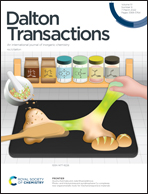Theoretical calculations of the effect of nitrogen substitution on the structural, vibrational, and electronic properties of wolframite-type ScTaO4 at ambient conditions
Abstract
In this study, the effect of nitrogen substitution in wolframite-type ScTaO4 was investigated using density-functional theory calculations. First, structural and mechanical properties, as well as the dynamical stability of ScTaO4 were examined deeply for the ambient-pressure structure. Subsequently, we studied how lattice vibrations are affected by hydrostatic pressure and determined the elastic moduli of ScTaO4. The results of our study show that the monoclinic structure of ScTaO4 is rigid and non-compressible. In addition, band-structure calculations show that ScTaO4 has a wide direct band-gap of 4.04 eV, which in turn leads to a possible tuning of electronic properties. We have found that this task can be conducted by partially substituting oxygen atoms in the unit cell with nitrogen atoms. Both band-structure calculations and charge-density analyses revealed a narrowing in the band gap caused by the presence of nitrogen atoms, which act as a shallow acceptor state, resulting in weak repulsive interactions and structural distortions in both Sc and Ta coordination polyhedra; reducing the crystal symmetry from monoclinic to triclinic.



 Please wait while we load your content...
Please wait while we load your content...